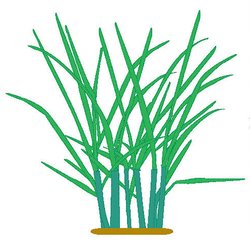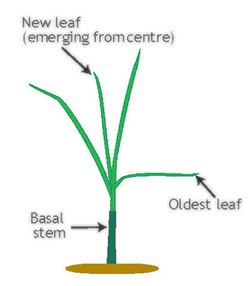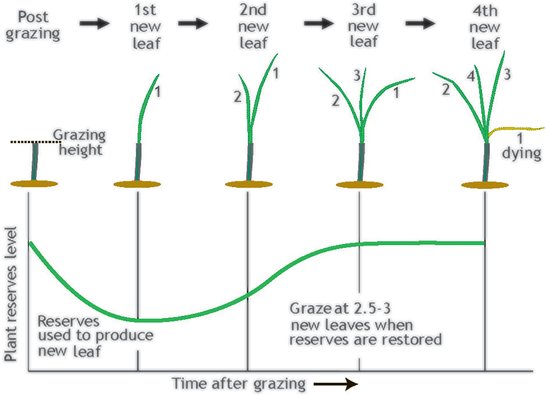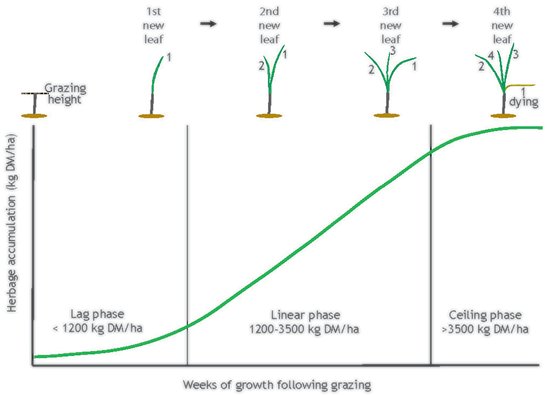Plant Physiology
In the UK, perennial ryegrass is the most widespread species of grass for grazing animals. A perennial ryegrass field is made up of a population of ryegrass tillers. A tiller is made up of a basal stem, a leaf sheath and – at any one time – three growing leaves.
When the tiller has developed three leaves it will continue to grow. As a fourth new leaf is produced the oldest leaf starts to die. Then a fifth leaf is produced and the second leaf dies – and so the process continues.
Tillers are largely individual but are clumped together, meaning they can (to some degree) exchange nutrients. The average field will contain between 3000 to 5000 tillers per square metre.
Perennial ryegrass plants will produce new tillers throughout the growing season with peak production occurring from late April to July. The time it takes for a tiller to produce three leaves will vary, depending on the plant, the local climate and the time of year.

Ryegrass clump

Ryegrass tiller
In mid spring it may take 15 days for a tiller to produce three leaves, with a new leaf produced every five days thereafter. In colder periods, it may take up to 50 days for a tiller to reach the three-leaf stage, with a new leaf produced every 17 days.

Tiller leaf production
Typically, fields grow in three phases, working in line with tiller production and energy reserves:
- The lag phase – where grass is typically less than 1200kg DM / ha
- The linear phase – where grass is typically between 1200 and 3500kg DM / ha
- The ceiling phase – where grass is typically above 3500kg DM / ha.
During the lag phase the tiller grows its first leaf; in the linear phase the second and third leaves develop; and in the ceiling phase the fourth leaf develops and the first leaf starts to die off.
When striving for peak grass performance, the aim should be to maintain grass growth in the linear phase of development, where high net growth rates and high grassland quality are achieved.
Three phases of grassland development

